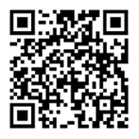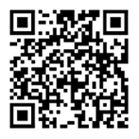About Us
HOW TO MAKE CUSTOM TELESCOPIC CYLINDER
- Categories:News Center
- Author:
- Origin:
- Time of issue:2023-10-16 16:39
- Views:
(Summary description)HOW TO MAKE CUSTOM TELESCOPIC CYLINDER
HOW TO MAKE CUSTOM TELESCOPIC CYLINDER
(Summary description)HOW TO MAKE CUSTOM TELESCOPIC CYLINDER
- Categories:News Center
- Author:
- Origin:
- Time of issue:2023-10-16 16:39
- Views:
Design factors are an essential part of the design process for custom telescopic cylinders. The designer needs to consider the balance between each positive effect against possible negative one to gain the best possible performance. Each design factor influences the other design factors, and the designer’s main task is to find the balance between those. Here we give a closer look at those factors.
1.THE FINAL OPERATING ENVIRONMENT
One essential piece of information concerning cylinder design is the environment where the cylinder will function. It’s the base for the material choices used in cylinders. These cylinders may work in harsh environmental conditions such as damp or sea areas, under great strain, and impurities. The temperatures may differ from -50 C° to + 200 C° degrees.
2. LIFETIME GOAL – THE STRENGTH CALCULATION
A vital part of the hydraulic cylinder design process is the strength calculation.
The strength calculations are performed at a certain pressure level, and the number of cycles can be seen as a result. If the desired result isn’t achieved, the plans are fine-tuned, the structures are reinforced and recalculated. The strength calculations must be able to be taken into account already at the design stage. The designer typically looks at safety factors at maximum pressure, fatigue life, and buckling. Extra information such as the hydraulic diagram of the machine and cylinder’s using purposes is an excellent aid for the design process.
3. FUNCTIONS AND FEATURES OF A HYDRAULIC CYLINDER
When starting the design process, the designer needs initial data and specific information on the functions and parts required for the hydraulic cylinder. Many applications might seem like they need special features, but most of them only need slight design modifications. This fact simplifies the process and reduces design costs. However, the functionality and features of hydraulic systems may differ significantly depending on their operational purpose and the conditions they will be used. For example, two seemingly similar cylinders might have been designed for completely different users and create different amounts of force depending on their application.
4. INSTALLATION ENVIRONMENT
The 3D model of the hydraulic cylinder gives accurate information about the environment in which the cylinder needs to act. The designer gets a clear picture of the machine and the space required for the cylinder functions. The information about the machine’s cylinders’ connection sizes and locations helps the designer get a full picture of the cylinder environment. The 3D model most often shows the cylinder’s connection sizes and the sites provided by the customer. The customer gets the 3D model to review the product in the operating environment. In some cases, we receive the 3D model of the application, but usually, the customer does the review themselves.
5. CYLINDER’S OIL FLOW, SPEED, AND SLIDING DISTANCE
The cylinder movement speed (m/s), the oil flow (l/min), the sliding distance (m or km), and the stress accumulation are vital parts of the cylinder lifetime. All the information helps the designer to choose the right kind of seals and cylinder tube materials. How much force needs to be created is an essential part of the cylinder’s functionality.
6. TEST REQUIREMENTS
In most cases, when a client orders a custom hydraulic cylinder, there will be needs for hydraulic cylinder tests. These tests are often related to critical safety standards. These tests guarantee that the cylinder meets the actual machine’s safety standards and all the requirements have been taken into account. The cleanliness of the cylinder and the cylinder fluids, the fatigue measurements are examples of the test requirements. The flawless operation of the cylinder is critical for the entire system and operational safety.
Scan the QR code to read on your phone
Related News
WHAT IS HIGH FREQUENCY QUENCHING AND TEMPERING?
Contact Information
Panjia Industrial Concentration District, Wujin District, Changzhou, Jiangsu
mary@cnhengjiu.com
+86-18118029715
+86-519-86549398
redsunfood1
Follow Us

Copyright © 2022 Jiangsu YINGNAISI Machinery Manufacturing Co., Ltd. All rights reserved 苏ICP备12047497号-1 Powered by: www.300.cn





 +86-18961135521
+86-18961135521

 Message
Message 